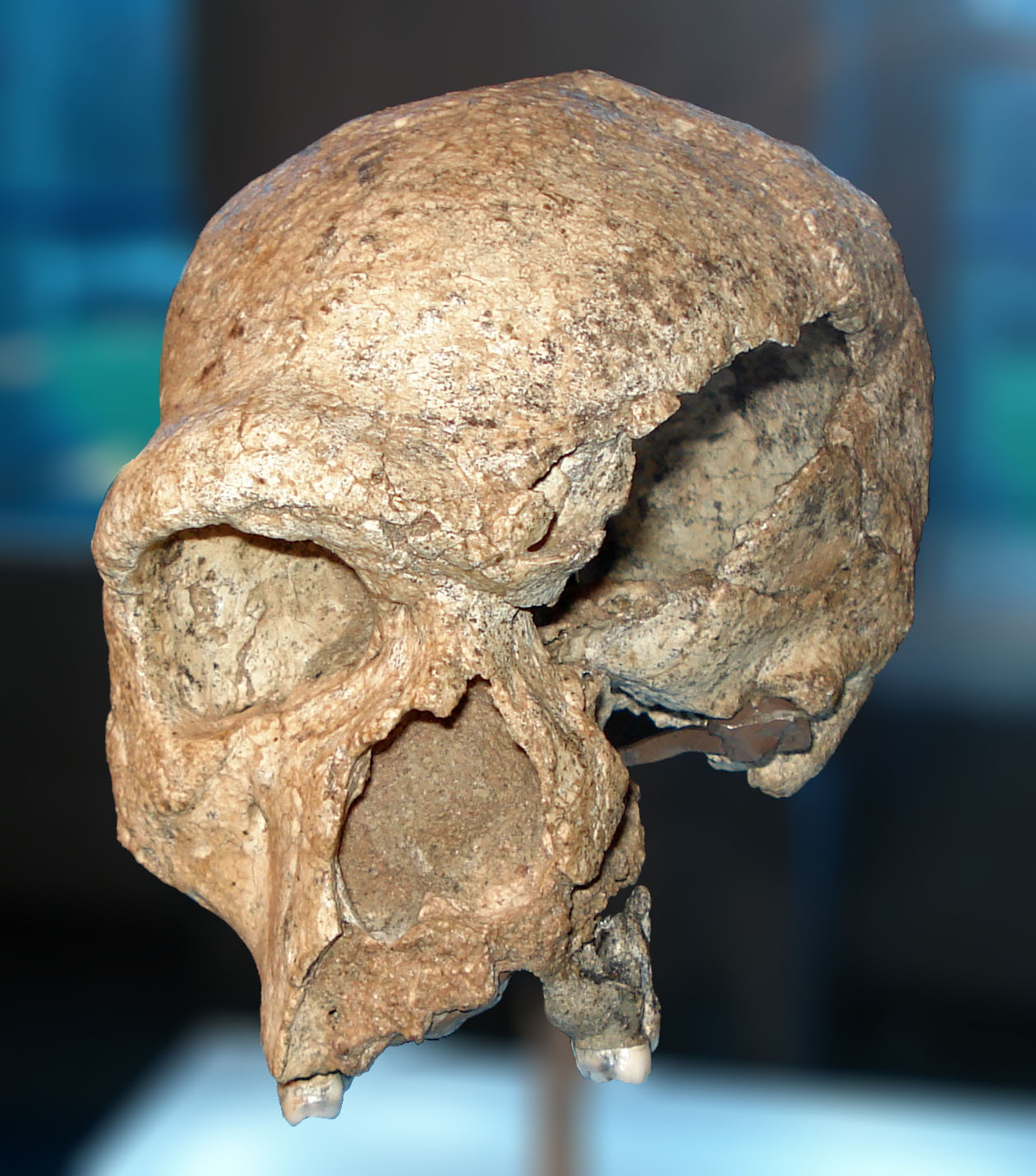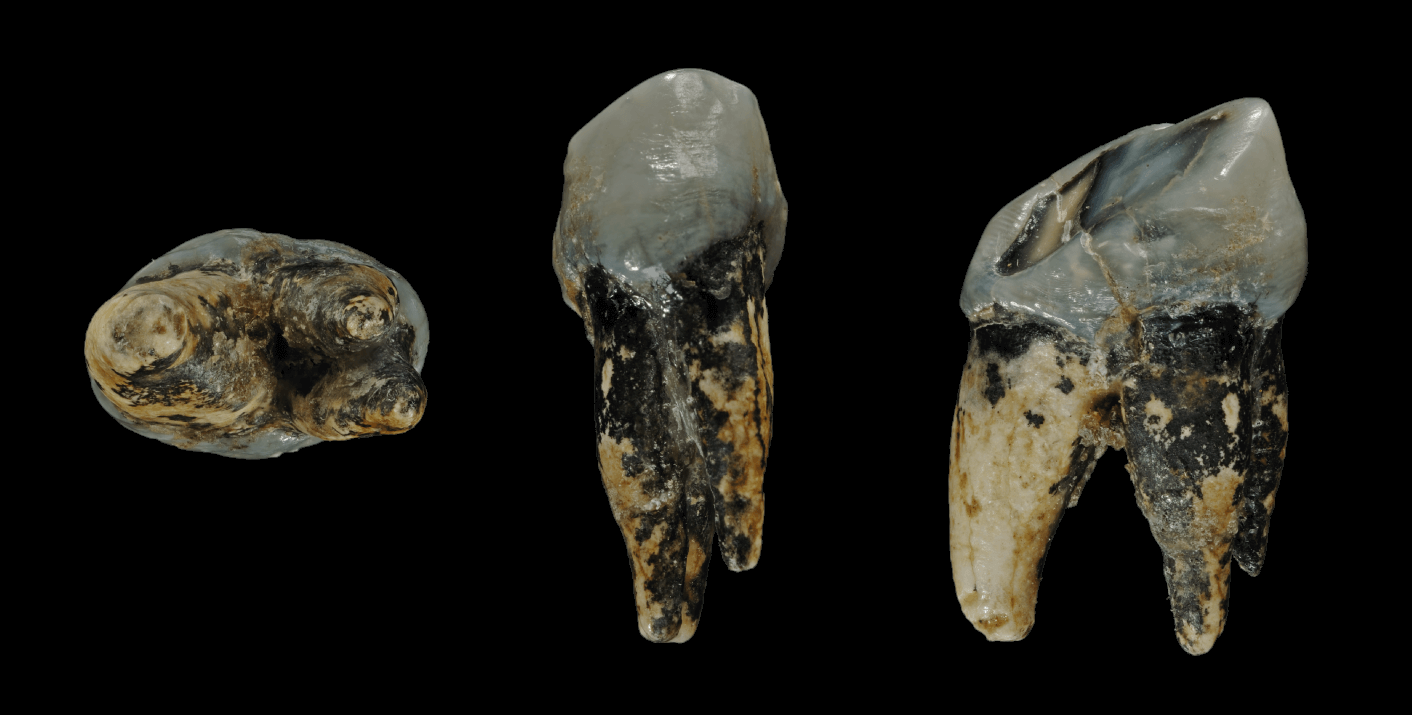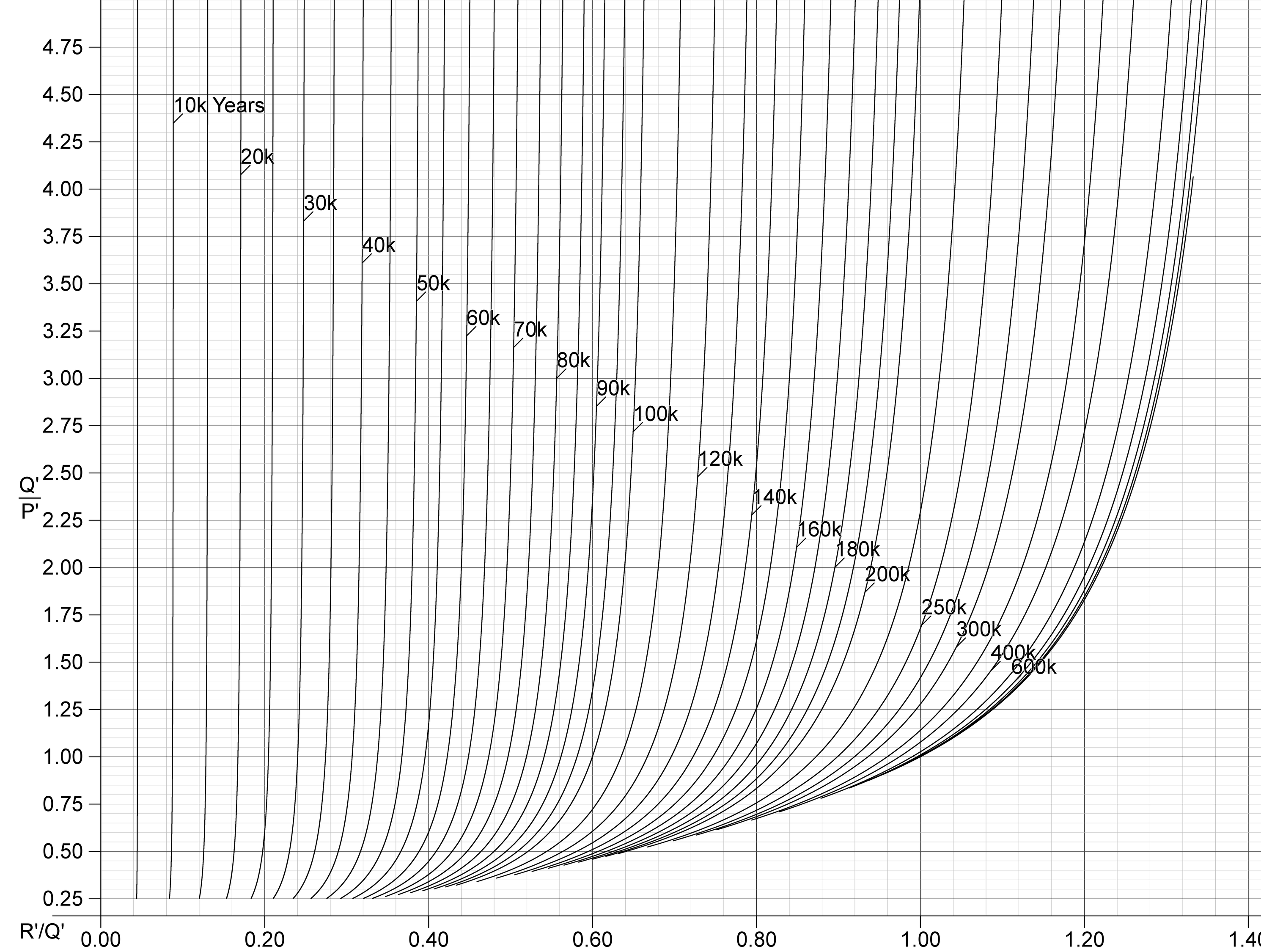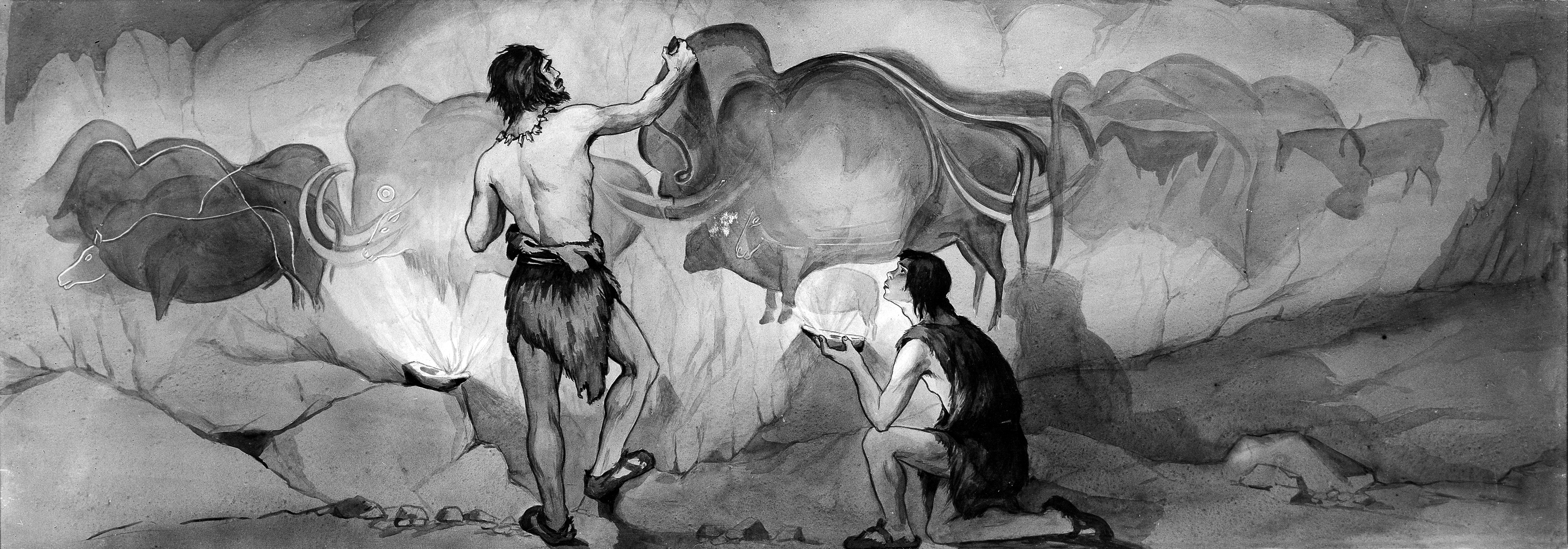|
Aroeira 3
Aroeira 3 is a 400,000 year old ''Homo heidelbergensis'' hominid skull which was discovered in the Aroeira cave, Portugal. It is the earliest human trace in Portugal. ''H. heidelbergensis'' existed at the transition between ''Homo erectus'' and early Neanderthals and used both stone tools and fire. The skull was damaged during the 2014 excavation but was restored in the following two years. In 2017 the description of the skull was published in ''Proceedings of the National Academy of Sciences of the United States of America, PNAS''. It is on display in the National Archaeology Museum (Lisbon). Description Aroeira 3 is a 400,000 year old ''Homo heidelbergensis'' hominid skull from the Middle Pleistocene which was discovered in the Aroeira cave, Portugal, and announced in spring 2017. It is the earliest human trace in Portugal. Hominin fossils from this era are commonly classified as ''H. heidelbergensis'', a chronospecies that stands at the transition between ''Homo erectus'' a ... [...More Info...] [...Related Items...] OR: [Wikipedia] [Google] [Baidu] |
Homo Heidelbergensis
''Homo heidelbergensis'' (also ''H. sapiens heidelbergensis''), sometimes called Heidelbergs, is an extinct species or subspecies of archaic human which existed during the Middle Pleistocene. It was subsumed as a subspecies of ''H. erectus'' in 1950 as ''H. e. heidelbergensis'', but towards the end of the century, it was more widely classified as its own species. It is debated whether or not to constrain ''H. heidelbergensis'' to only Europe or to also include African and Asian specimens, and this is further confounded by the type specimen (Mauer 1) being a jawbone, because jawbones feature few diagnostic traits and are generally missing among Middle Pleistocene specimens. Thus, it is debated if some of these specimens could be split off into their own species or a subspecies of ''H. erectus''. Because the classification is so disputed, the Middle Pleistocene is often called the "muddle in the middle." ''H. heidelbergensis'' is regarded as a chronospecies, evolving from an Africa ... [...More Info...] [...Related Items...] OR: [Wikipedia] [Google] [Baidu] |
Homo Steinheimensis
The Steinheim skull is a fossilized skull of a ''Homo neanderthalensis'' or ''Homo heidelbergensis'' found on 24 July 1933 near Steinheim an der Murr, Germany. It is estimated to be between 250,000 and 350,000 years old. The skull is slightly flattened and has a cranial capacity between 950 and 1280 cc. Sometimes referred to as ''Homo steinheimensis'' in older literature, the original fossil is housed in the State Museum of Natural History in Stuttgart, Germany. Some believe that the Steinheim skull may have belonged to an adult female due to its gracile nature. Classification The "primitive man of Steinheim" is a single find. The designation "Steinheim skull" can be seen as a reference to the location of the fossil, but in no way identifies with a certain taxon. The skull shows characteristics of both ''H. heidelbergensis'' and Neanderthals. It is therefore classified by most paleoanthropologists to ''H. heidelbergensis'' and is believed to be a transitional form of ' ... [...More Info...] [...Related Items...] OR: [Wikipedia] [Google] [Baidu] |
List Of Human Evolution Fossils
The following tables give an overview of notable finds of Hominini, hominin fossils and Skeleton, remains relating to human evolution, beginning with the formation of the tribe Hominini (the divergence of the Chimpanzee–human last common ancestor, human and chimpanzee lineages) in the late Miocene, roughly 7 to 8 million years ago. As there are thousands of fossils, mostly fragmentary, often consisting of single bones or isolated teeth with complete skulls and skeletons rare, this overview is not complete, but show some of the most important findings. The fossils are arranged by approximate age as determined by radiometric dating and/or incremental dating and the species name represents current consensus; if there is no clear scientific consensus the other possible classifications are indicated. The early fossils shown are not considered ancestors to ''Homo sapiens'' but are closely related to ancestors and are therefore important to the study of the lineage. After 1.5 million ... [...More Info...] [...Related Items...] OR: [Wikipedia] [Google] [Baidu] |
Stalagmite
A stalagmite (, ; from the Greek , from , "dropping, trickling") is a type of rock formation that rises from the floor of a cave due to the accumulation of material deposited on the floor from ceiling drippings. Stalagmites are typically composed of calcium carbonate, but may consist of lava, mud, peat, pitch, sand, sinter, and amberat (crystallized urine of pack rats). The corresponding formation hanging down from the ceiling of a cave is a stalactite. Mnemonics have been developed for which word refers to which type of formation; one is that ''stalactite'' has a C for "ceiling", and ''stalagmite'' has a G for "ground", another is that, as with ants in the pants, the mites go up and the tights (tites) come down. Formation and type Limestone stalagmites The most common stalagmites are speleothems, which usually form in limestone caves. Stalagmite formation occurs only under certain pH conditions within the cavern. They form through deposition of calcium carbonate ... [...More Info...] [...Related Items...] OR: [Wikipedia] [Google] [Baidu] |
Uranium–thorium Dating
Uranium–thorium dating, also called thorium-230 dating, uranium-series disequilibrium dating or uranium-series dating, is a radiometric dating technique established in the 1960s which has been used since the 1970s to determine the age of calcium carbonate materials such as speleothem or coral. Unlike other commonly used radiometric dating techniques such as rubidium–strontium or uranium–lead dating, the uranium-thorium technique does not measure accumulation of a stable end-member decay product. Instead, it calculates an age from the degree to which secular equilibrium has been restored between the radioactive isotope thorium-230 and its radioactive parent uranium-234 within a sample. Background Thorium is not soluble in natural water under conditions found at or near the surface of the earth, so materials grown in or from this water do not usually contain thorium. In contrast, uranium is soluble to some extent in all natural water, so any material that precipitates or i ... [...More Info...] [...Related Items...] OR: [Wikipedia] [Google] [Baidu] |
Acheulian
Acheulean (; also Acheulian and Mode II), from the French ''acheuléen'' after the type site of Saint-Acheul, is an archaeological industry of stone tool manufacture characterized by the distinctive oval and pear-shaped "hand axes" associated with ''Homo erectus'' and derived species such as ''Homo heidelbergensis''. Acheulean tools were produced during the Lower Palaeolithic era across Africa and much of West Asia, South Asia, East Asia and Europe, and are typically found with ''Homo erectus'' remains. It is thought that Acheulean technologies first developed about 1.76 million years ago, derived from the more primitive Oldowan technology associated with ''Homo habilis''. The Acheulean includes at least the early part of the Middle Paleolithic. Its end is not well defined, depending on whether Sangoan (also known as "Epi-Acheulean") is included, it may be taken to last until as late as 130,000 years ago. In Europe and Western Asia, early Neanderthals adopted Acheulean tec ... [...More Info...] [...Related Items...] OR: [Wikipedia] [Google] [Baidu] |
Magdalenian
The Magdalenian cultures (also Madelenian; French: ''Magdalénien'') are later cultures of the Upper Paleolithic and Mesolithic in western Europe. They date from around 17,000 to 12,000 years ago. It is named after the type site of La Madeleine, a rock shelter located in the Vézère valley, commune of Tursac, in France's Dordogne department. Édouard Lartet and Henry Christy originally termed the period ''L'âge du renne'' (the Age of the Reindeer). They conducted the first systematic excavations of the type site, publishing in 1875. The Magdalenian epoch is associated with reindeer hunters, although Magdalenian sites contain extensive evidence for the hunting of red deer, horses, and other large mammals present in Europe toward the end of the last glacial period. The culture was geographically widespread, and later Magdalenian sites stretched from Portugal in the west to Poland in the east, and as far north as France, the Channel Islands, England, and Wales. It is the th ... [...More Info...] [...Related Items...] OR: [Wikipedia] [Google] [Baidu] |
Solutrean
The Solutrean industry is a relatively advanced flint tool-making style of the Upper Paleolithic of the Final Gravettian, from around 22,000 to 17,000 BP. Solutrean sites have been found in modern-day France, Spain and Portugal. Details The term ''Solutrean'' comes from the type-site of " Cros du Charnier", dating to around 21,000 years ago and located at Solutré, in east-central France near Mâcon. The Rock of Solutré site was discovered in 1866 by the French geologist and paleontologist Henry Testot-Ferry. It is now preserved as the Parc archéologique et botanique de Solutré. The industry was named by Gabriel de Mortillet to describe the second stage of his system of cave chronology, following the Mousterian, and he considered it synchronous with the third division of the Quaternary period. The era's finds include tools, ornamental beads, and bone pins as well as prehistoric art. Solutrean tool-making employed techniques not seen before and not rediscovered for mil ... [...More Info...] [...Related Items...] OR: [Wikipedia] [Google] [Baidu] |
Paleolithic
The Paleolithic or Palaeolithic (), also called the Old Stone Age (from Greek: παλαιός ''palaios'', "old" and λίθος ''lithos'', "stone"), is a period in human prehistory that is distinguished by the original development of stone tools, and which represents almost the entire period of human prehistoric technology. It extends from the earliest known use of stone tools by hominins, 3.3 million years ago, to the end of the Pleistocene, 11,650 cal BP. The Paleolithic Age in Europe preceded the Mesolithic Age, although the date of the transition varies geographically by several thousand years. During the Paleolithic Age, hominins grouped together in small societies such as bands and subsisted by gathering plants, fishing, and hunting or scavenging wild animals. The Paleolithic Age is characterized by the use of knapped stone tools, although at the time humans also used wood and bone tools. Other organic commodities were adapted for use as tools, includ ... [...More Info...] [...Related Items...] OR: [Wikipedia] [Google] [Baidu] |
Pleistocene
The Pleistocene ( , often referred to as the ''Ice age'') is the geological Epoch (geology), epoch that lasted from about 2,580,000 to 11,700 years ago, spanning the Earth's most recent period of repeated glaciations. Before a change was finally confirmed in 2009 by the International Union of Geological Sciences, the cutoff of the Pleistocene and the preceding Pliocene was regarded as being 1.806 million years Before Present (BP). Publications from earlier years may use either definition of the period. The end of the Pleistocene corresponds with the end of the last glacial period and also with the end of the Paleolithic age used in archaeology. The name is a combination of Ancient Greek grc, label=none, πλεῖστος, pleīstos, most and grc, label=none, καινός, kainós (latinized as ), 'new'. At the end of the preceding Pliocene, the previously isolated North and South American continents were joined by the Isthmus of Panama, causing Great American Interchang ... [...More Info...] [...Related Items...] OR: [Wikipedia] [Google] [Baidu] |
Estremadura Limestone Massif
The Estremadura Limestone Massif (Portuguese: ) is a massif located in central west Portugal. Approximately half of the massif is located within the Serras de Aire e Candeeiros Natural Park. The massif has an elongated NE-SW direction and englobes the municipalities of Batalha and Ourém in the north and northeast; Torres Novas and Alcanena in the east and southeast; Rio Maior Rio Maior () is a municipality in the Santarém District in Portugal. The population in 2011 was 21,192, in an area of 272.76 km². The present mayor is Isaura Morais of the Social Democratic Party (PSD), the first woman to be elected mayor ... in the south; and Alcobaça in the west. References Geologic formations of Portugal {{Santarém-geo-stub ... [...More Info...] [...Related Items...] OR: [Wikipedia] [Google] [Baidu] |
Karst
Karst is a topography formed from the dissolution of soluble rocks such as limestone, dolomite, and gypsum. It is characterized by underground drainage systems with sinkholes and caves. It has also been documented for more weathering-resistant rocks, such as quartzite, given the right conditions. Subterranean drainage may limit surface water, with few to no rivers or lakes. However, in regions where the dissolved bedrock is covered (perhaps by debris) or confined by one or more superimposed non-soluble rock strata, distinctive karst features may occur only at subsurface levels and can be totally missing above ground. The study of ''paleokarst'' (buried karst in the stratigraphic column) is important in petroleum geology because as much as 50% of the world's hydrocarbon reserves are hosted in carbonate rock, and much of this is found in porous karst systems. Etymology The English word ''karst'' was borrowed from German in the late 19th century, which entered German much earlier ... [...More Info...] [...Related Items...] OR: [Wikipedia] [Google] [Baidu] |









.jpg)